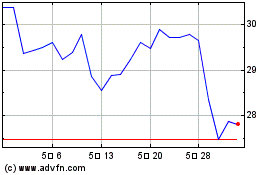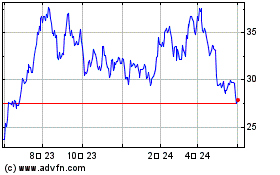Yesterday, I wrote "Just 2 Scenarios: Recession or Not" to
highlight that since the market had already priced-in much slower
growth, verging on a mild recession, and since we still don't know
for sure if we are going to have one at all, it doesn't make sense
to sell all your stocks based on any "sky is falling" scenario.
Today, I bring you that third alternative, with a
twist. My title is tongue-in-cheek, a twist on the name of one very
bearish economist named Andrew Smithers.
But since his research may carry some weight with
other quantitative fund managers, I think it's at least worth
seeing what he has to say.
Get Out While You Can
That's the gist of his message right now as he sees
a "significant rally" on the horizon as companies rich in cash buy
back shares. Smithers says this will be a rebound to sell as US
equities are still 40% overvalued even after the current 15%+
correction.
Anna Kitanaka, in a story on Bloomberg.com Monday,
writes, "Smithers said in a report dated Aug. 15 that the S&P
500 is still overvalued by about 43 percent relative to earnings
for the past 10 years... Relative to the Q ratio, a comparison of
market value with the replacement cost of assets, the index is
about 36 percent too high."
I couldn't find that report publicly available so I
will just summarize and quote from Kitananka's excellent article.
For details on the valuation model, Equity Q, that Smithers uses,
see his investment management website at Smithers & Co. where
he has a detailed FAQ on "q" as he calls it.
Don't Be Fooled
Smithers explains that just because corporations
have lots of cash doesn't equal economic expansion. Cash continues
to accumulate to record levels because profit margins are so high.
But as Kitananka summarizes his views, such wider profit "margins
imply companies are either paying their employees too little,
employing too few people or keeping their prices too high, all of
which damp demand."
This is precisely the new economic landscape that
become stunningly apparent after the GDP revisions of July 29.
First, we finally had confirmation that stubbornly high
unemployment was very precipitous of the actual growth numbers.
Second, we were forced to take a good hard look at
where a big chunk of US corporate profits were coming from (abroad)
since domestic demand was barely on the radar.
"How would the S&P 500 stay on pace to earn
nearly $100 per share this year if China really slowed down?" was
the question I started asking on August 1. Here's how Smithers saw
the investor's predicament a few weeks ago...
"It is common to find that investors, often
supported by ill-judged comments by investment bankers and
financial journalists, try to value shares on the basis of current
profits," he wrote. "This is, of course, very foolish as it means
that they undervalue companies when profits are low and overvalue
them when profits are high -- as they are today."
A Multi-Decade Bear Market
Smithers worked at S.G. Warburg for 27 years before
starting his own investment firm and achieved some notoriety after
calling stocks overvalued in his March 2000 book Valuing Wall
Street.
In October 2009, as the S&P rallied to nearly
touch the 1,100 level for the first time in a year, he said stocks
were 40% overvalued. Listening to this bear then would have
hurt.
But he has a very long term perspective in mind
when he talks about the market. From Kitanaka's article, Smithers
is quoted, "The U.S. market was more overvalued in 2000 than ever
before. It has yet to become undervalued and will naturally do
so at some stage. The bear market which started in 2000 is
likely to be a long one."
Those are my italics on "has yet to become
undervalued." Boy, if he didn't think stocks were cheap when the
Dow was below 7,000 and the S&P below 700 in 2009, this guy is
hard to please!
The reality is that he is die-hard in his economic
analysis and has a really big big-picture perspective that might
help some people get really rich -- eventually.
But it should be painfully obvious, to even the
most die-hard Elliot Wave Super Cycle theorist that you can make a
lot of money trading the gigantic swings within such decade-long
sideways markets, which are always full of smaller bull and bear
cycles.
It really comes down to your investing and trading
time frames. Are you going to let deep and persistent "structural"
problems prevent you from catching cyclical trends, swings, and
counter moves? Of course you aren't.
What If the Bear is Real, and Really
Nasty?
So, should we listen to Smithers now at all? I
think we can still "wait and see" as I've been saying for 3 weeks
now that fund managers would be doing. Take long positions on good
stocks that still have earnings momentum and enjoy that 10% rally
that he says is coming until we know more about a potential
recession.
My line in the sand that tells me the recession is
about to become real is the 1,100 level on the S&P 500. You
will obviously have time to sell because we are not crashing
through there yet.
My perspective, as I wrote about all through 2009
and 2010 in my column "Buy and Trade" as a market analyst for
PEAK6, is that you can put the odds in your favor to trade 1-3
months swings in good stocks much better than you can time the
overall market.
Not all earnings are going down the tubes and the
Zacks Rank will keep you on the right side of things because as
analyst estimates come down, those companies with visible and
sustainable profits will stand out. And these are the stocks that
will beat the market.
Here's how I summed it up last week in A Trader's
Market for the Next 2 Months when I was selling puts and swing
trading Cummins (CMI), National Oilwell Varco (NOV), Suncor (SU),
Southern Copper (SCCO), and CVR Energy (CVI)...
You have a couple of things in your favor that
create a high-probability opportunity to profit.
If there's a stock you wanted to buy last month
and now it's trading 20% to 40% below that level, ask yourself
"What does my risk/reward look like now?"
Ignoring for a moment the probability of
recession that could take it even lower -- which is what this
market sell-off is all about -- if you buy the stock "on sale" you
put yourself in the investment position you wanted with a new
margin of safety.
Then, if you get a 10% to 20% pop in a few days,
you have the luxury of choosing that short-term trading gain or
keeping the investment.
When you get these terrific volatility-driven
returns in a matter of days, there is no harm in taking them.
Especially since chances are we haven't seen the final bottom yet
in this panic and you will get new opportunities to
re-enter.
Disclosure: I am long and/or short naked puts in
NOV, SU, SCCO, CVI, and CMI
Kevin Cook is a Senior Stock Strategist for
Zacks.com
CUMMINS INC (CMI): Free Stock Analysis Report
CVR ENERGY INC (CVI): Free Stock Analysis Report
NATL OILWELL VR (NOV): Free Stock Analysis Report
SOUTHERN COPPER (SCCO): Free Stock Analysis Report
SUNCOR ENERGY (SU): Free Stock Analysis Report
Zacks Investment Research
CVR Energy (NYSE:CVI)
과거 데이터 주식 차트
부터 6월(6) 2024 으로 7월(7) 2024

CVR Energy (NYSE:CVI)
과거 데이터 주식 차트
부터 7월(7) 2023 으로 7월(7) 2024
